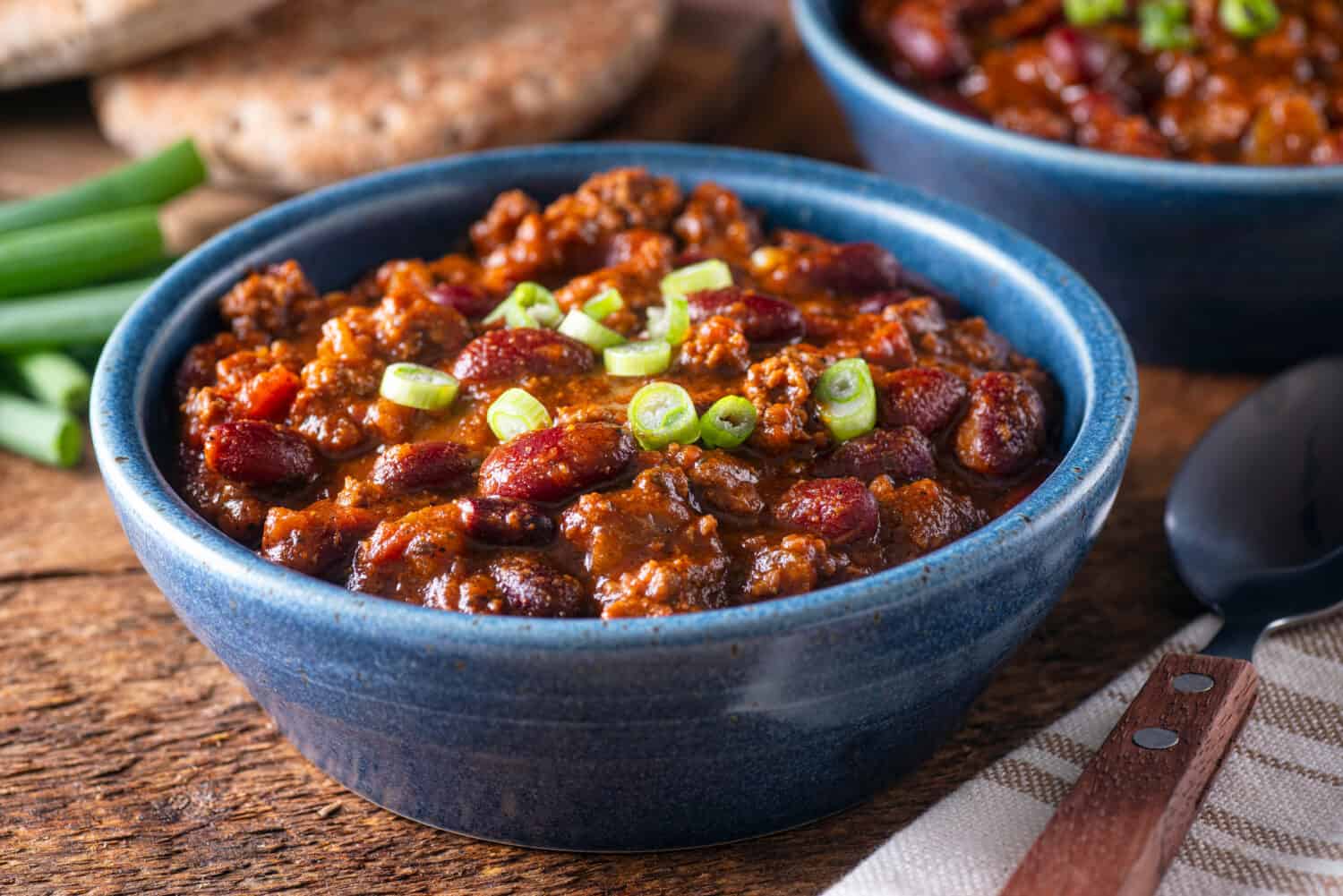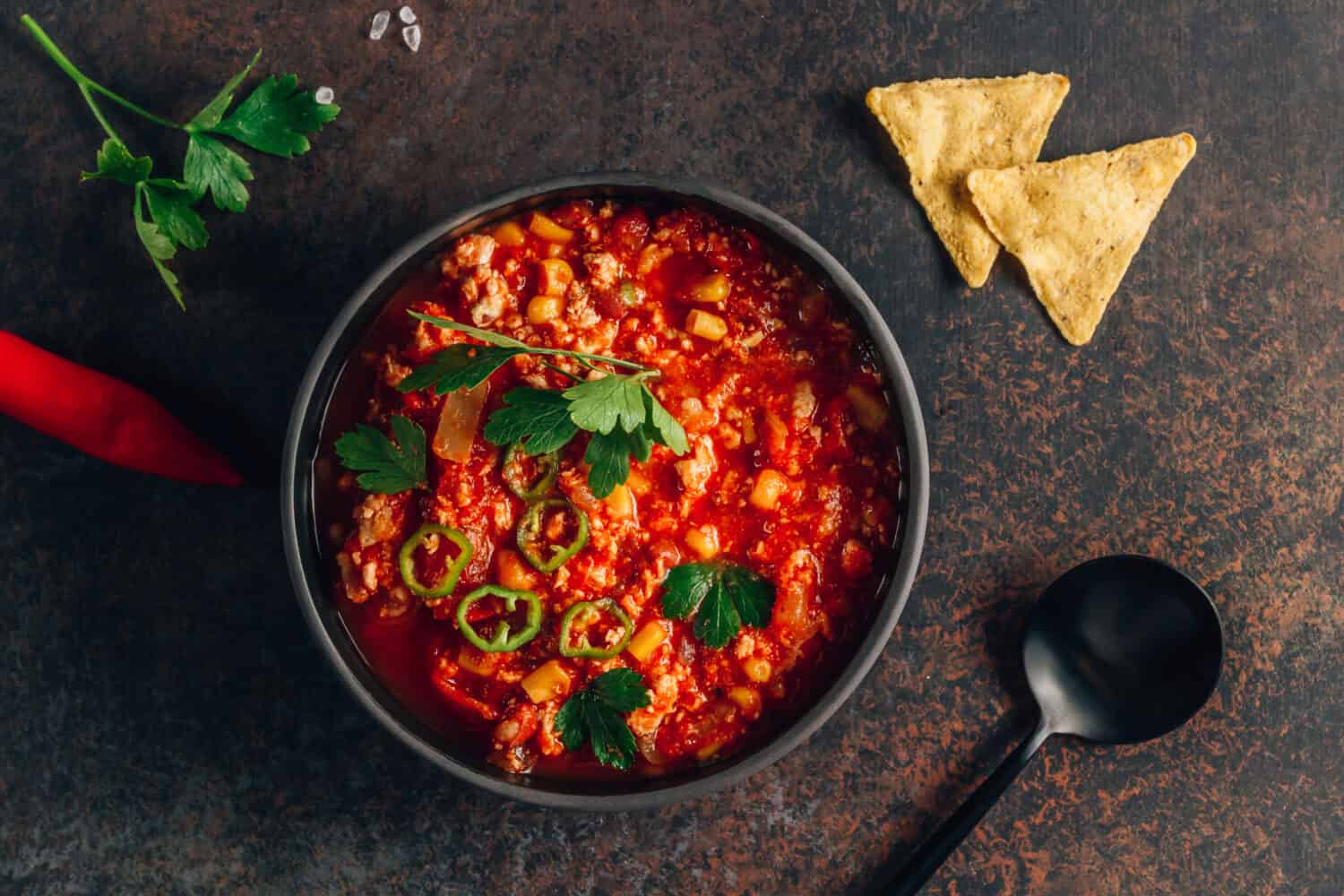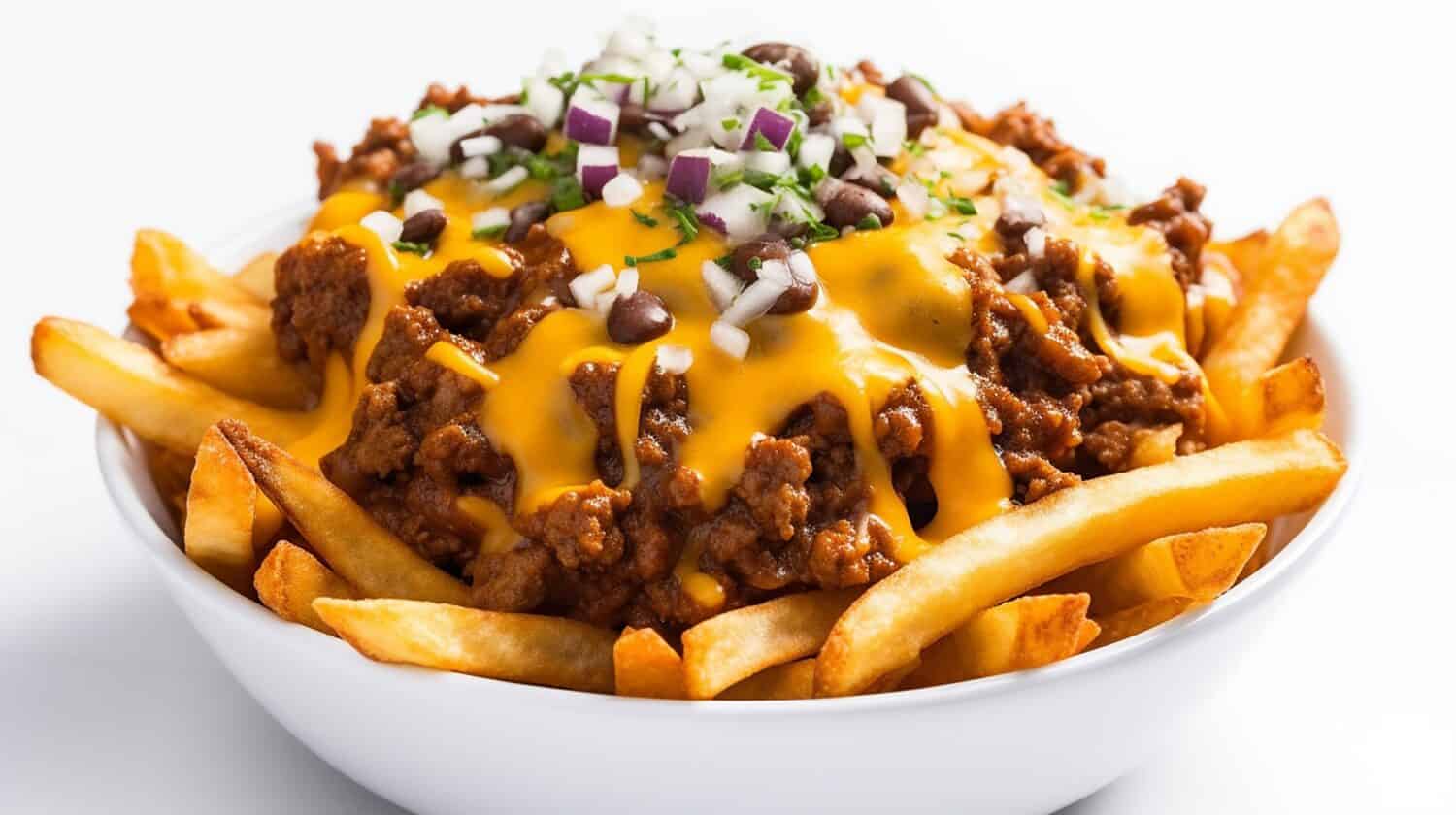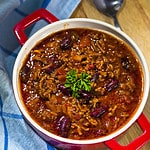There’s just something about a hearty bowl of chili on a cool (or downright frigid) day. After all, there’s a reason why chili cook-offs are such a popular event! Whether you’re a fan of the traditional combination of beef and beans or you tend toward a creamy white bean chili with roasted chicken, chances are, you have your favorite preparation method, serving accompaniments, and tasty toppings. But is chili healthy? By and large, the answer is “yes,” though it can greatly depend on the ingredients. We’re diving into the science behind our favorite fall and winter staple to find out!

On a cold day, nothing calls our name more than a steaming hot bowl of chili. But is it healthy? We're digging in to find out! Image: Foodio, Shutterstock
©Foodio/Shutterstock.com
What is Chili, and Where Did it Originate?
Before we go any further, it's probably good to have a general idea of what chili is. Traditionally, it is a spicy stew made up of ground meat — such as turkey, chicken, beef, lamb, or venison — along with chili powder (or fresh chilies), beans, and tomato.
We may have the cowboys to thank for our chili … sort of. The stories abound, but Chili con Carne, which translates to “chili with meat,” has roots in the American West (more specifically Texas), Mexico, and the Canary Islands. Rumor has it the dish was introduced at an 1893 Chicago Fair, where it delighted fans from all over. But it’s the cowboys who supposedly began pairing beef and beans. To add extra protein to the meals they consumed on their cattle drives — the beef was valuable and limited — they made a pot of beans to help fill them up. Eventually, they mixed the beef and beans, and voilà. The chili we know and love today! These days, it’s so popular that the fourth Thursday in February is officially considered National Chili Day — a great excuse to indulge!

Don't be afraid to add some extra kick to your chili — the capsaicin in chili peppers can reduce your appetite and speed up your metabolism! Image: Julia Mikhaylova, Shutterstock
©Julia Mikhaylova/Shutterstock.com
What are the Health Advantages and Disadvantages of Chili?
According to WebMD, “While not considered to be a low-fat meal, chili is relatively low in calories and provides a great serving of protein, thanks to the meat and beans it contains.” This essentially sums it up — chili can be made with leaner meats such as turkey and chicken. Paired with vegetables and beans, which are high in fiber, you have a filling meal that offers a hefty dose of energy-boosting protein.
Additionally, chili peppers are said to promote weight loss, which can help combat obesity. According to recent studies, the capsaicin in chili peppers (which is what gives them their heat) has been shown to reduce appetite and control blood glucose and insulin levels, which can be helpful for diabetic health. Research data also shows that spicy foods speed up your metabolism. In fact, many of the spices commonly used in chili are included in this category, such as cumin, turmeric, and chili peppers.
With all of that said, we would be remiss not to mention a few prospective downfalls in your chili consumption. As with any other ingredient-heavy food, chili's health benefits are largely dependent on its preparation. If you lean toward over-salting, for example, your sodium intake has the potential to be through the roof. It's also important to note that overdoing it on spicy foods has its own repercussions — namely, gastrointestinal distress such as inflammation, heartburn, and diarrhea. Moderation is essential when it comes to spicy foods, particularly if you already suffer from stomach ailments.
Advantages:
- High in protein
- Low in calories (depends on preparation)
- Low in carbohydrates
- Low in sugar
- Low in sodium (depends on preparation)
- Promote weight loss
- Speeds up metabolism
- Vegetarian-friendly
- High in fiber (thank you, beans!)
Disadvantages:
As we mentioned above, chili's health benefits are largely based on preparation. If, for example, you serve it over French fries with a melted cheese topping, you're looking at a far less healthy dish. Even on its own, a bowl of chili can range from lean and chock full of veggies to a beefy, calorie-dense, sodium-laden iteration with accompaniments like sour cream and shredded cheddar.

Whether or not chili is a healthy addition to your diet truly depends on how you're preparing and serving it. Chili cheese fries, anyone? Image: Mohamed-Kareem Mohamed, Shutterstock
©Mohamed-Kareem Mohamed/Shutterstock.com
Important Takeaways:
- Chili is considered a relatively healthy dish, but this can depend on the ingredients, sodium content, and how it is served.
- The history of “Chili con Carne” is rooted in the American West, Mexico, and the Canary Islands.
- Traditionally, chili is made from meat, beans, chili powder or fresh chilies, and tomato.
- Chili's advantages include promoting weight loss, speeding up metabolism, and being high in protein and fiber and low in sugar and carbohydrates.
- Chili's disadvantages include being high in sodium and calories, depending on the preparation and toppings.
Recipe Card
Print
The Best Chili Recipe
- Total Time: 2 hours 50 minutes
Ingredients
- 2 1/2 lb. lean chuck, ground
- 1 lb. lean pork, ground
- 4 garlic cloves, finely chopped
- 1 cup finely chopped onion
- 8 oz. hunt’s tomato sauce
- 1 cup water
- 1 can beer (12 oz.)
- 3 Tablespoons chili powder
- 2 Tablespoons instant beef bouillon (or 6 cubes)
- 2 Tablespoons cumin, ground
- 2 teaspoons paprika
- 2 teaspoons oregano leaves
- 2 teaspoons sugar
- 1/2 teaspoon coriander, ground
- 1 teaspoon unsweetened cocoa
- 1/2 teaspoon Louisiana hot sauce
- 1 teaspoon cornmeal
- 1 teaspoon flour
- 1 teaspoon warm water
Instructions
- In a large saucepan brown 1 1/4 pounds of the ground meat (the beef and the pork), drain the fat.
- Remove meat (the beef and the pork). Brown the rest of the ground meat, drain all but 2 tablespoons of the fat.
- Add the garlic and onion, cook and stir until tender.
- Add the other half of the meat and the tomato sauce, water, beer, chili powder, bouillon, cumin, paprika, oregano, sugar, coriander, cocoa, and hot sauce. Mix well.
- Bring to a boil then reduce heat and simmer, covered , for 2 hours.
- In a small bowl, stir together the cornmeal and flour, then add the warm water and mix well.
- Stir into chili and cook, covered, for an additional 20 minutes.
Notes
If you accidentally add too much hot sauce or spice to your chili, serve it with sour cream or extra cheese on top. Dairy contains a protein called casein that cools the burning heat of spicy foods.
- Prep Time: 30 minutes
- Cook Time: 2 hours, 20 minutes
- Category: Main Course
- Method: Crockpot
- Cuisine: American
The image featured at the top of this post is ©Julia Mikhaylova/Shutterstock.com
